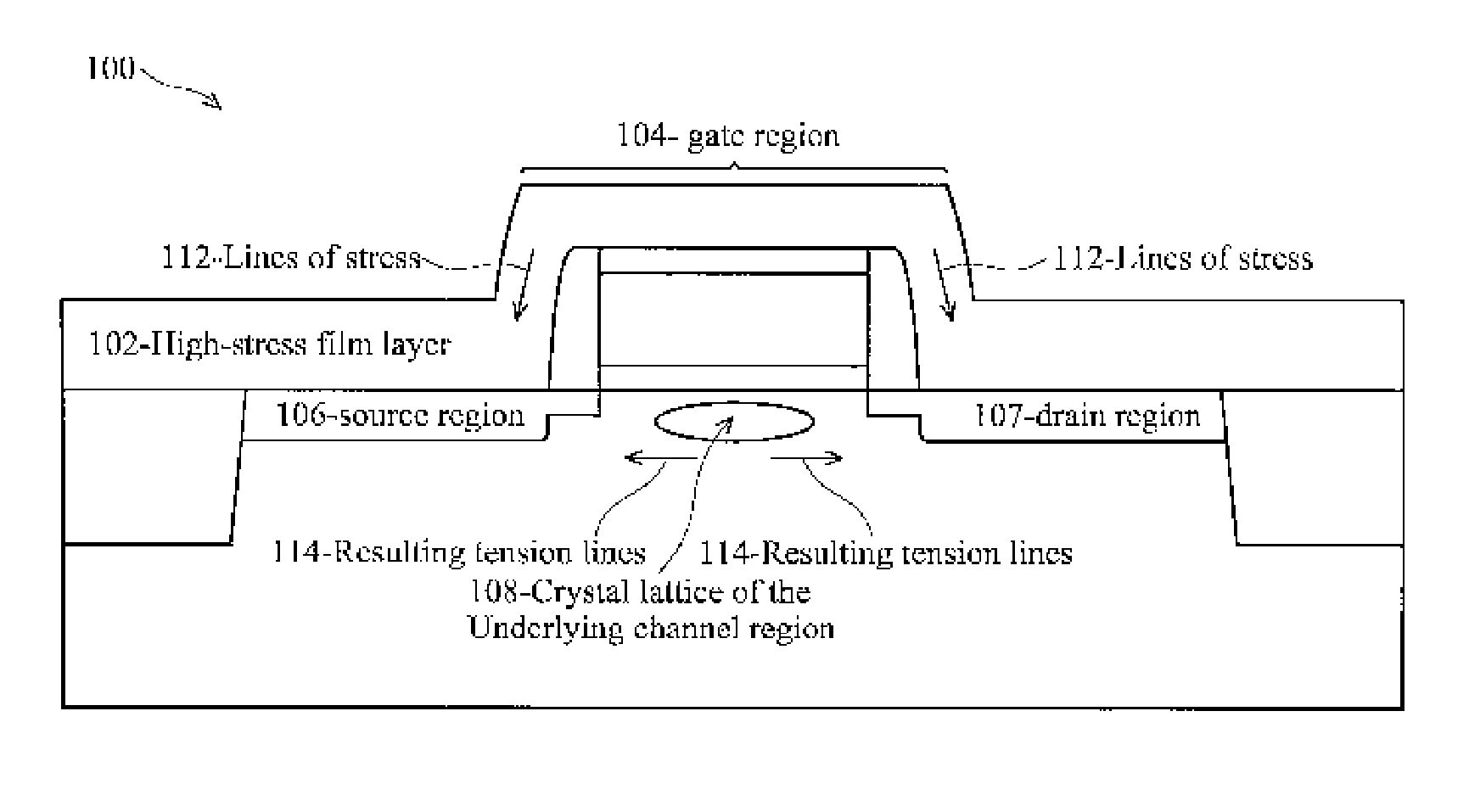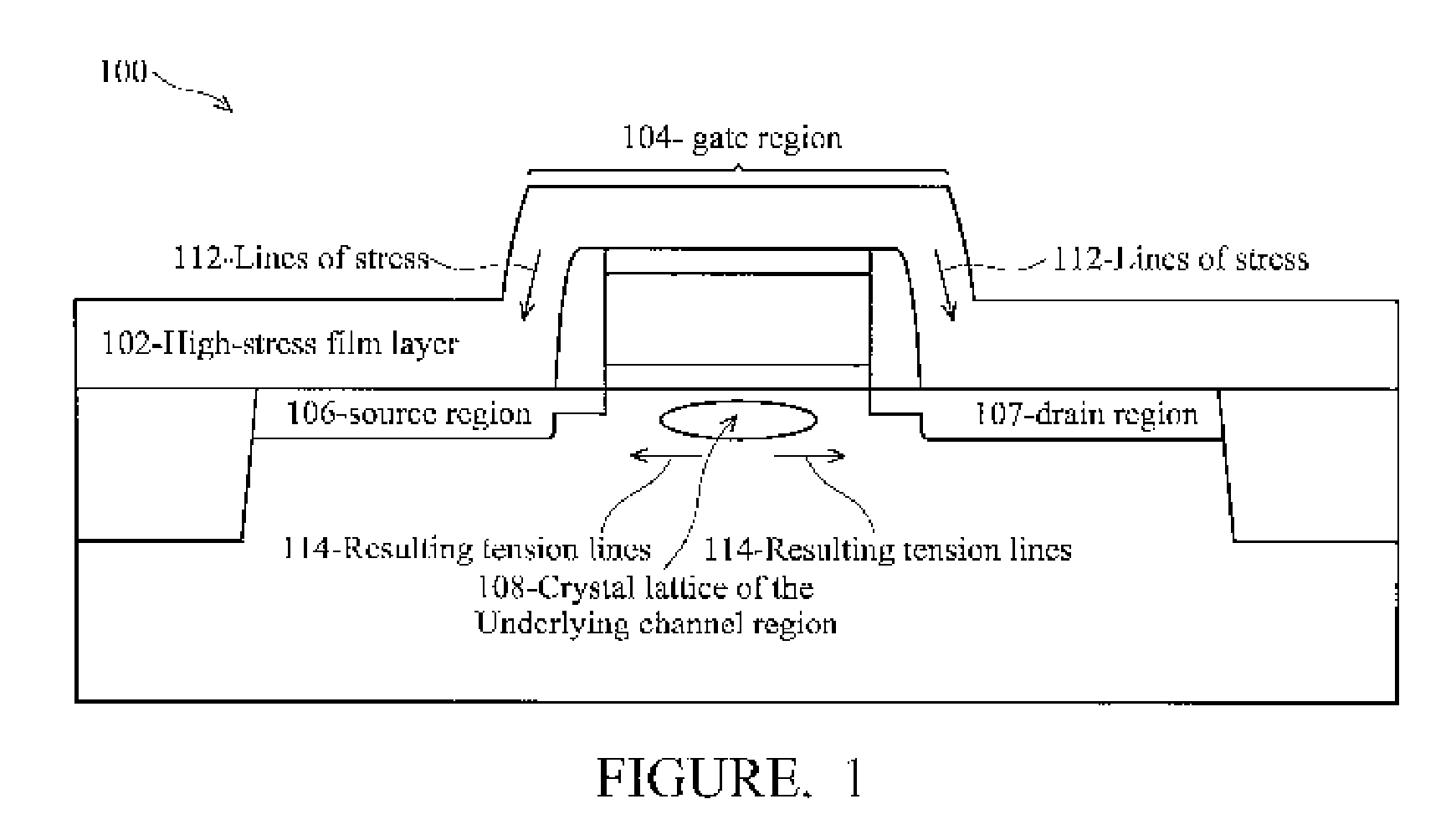Methods and Structures to Produce a Strain-Inducing Layer in a Semiconductor Device
a technology of strain-inducing layer and semiconductor device, which is applied in the direction of semiconductor devices, electrical appliances, basic electric elements, etc., can solve the problems of impede the progress of particles, and achieve the effect of increasing stress and improving contact resistan
- Summary
- Abstract
- Description
- Claims
- Application Information
AI Technical Summary
Benefits of technology
Problems solved by technology
Method used
Image
Examples
Embodiment Construction
[0014]FIG. 1 is a cross-sectional diagram of a MOSFET transistor 100 in which a high-stress film layer 102 has been overlaid on the gate 104 and source / drain regions 106, 107 in order to impart a strain on the crystal lattice of the underlying channel region 108 of the transistor 100. Lines of stress 112 are drawn to illustrate the stresses built into the interface between the high-stress film layer 102, and the resulting tension lines 114 illustrate that a strain is imparted on the channel region 108 because of the pulling outward by the high-stress film 102 at the interface between the layers. According to Hooke's Law, stress is directly proportional to strain up to some proportionality constant. The above is a very general description of the elements of the MOSFET device 100. A number of the elements shown in this figure but not here described will be described in later figures as the process for forming the strain-inducing layer 102 and the higher carrier mobility MOSFET 100 is ...
PUM
 Login to View More
Login to View More Abstract
Description
Claims
Application Information
 Login to View More
Login to View More - R&D
- Intellectual Property
- Life Sciences
- Materials
- Tech Scout
- Unparalleled Data Quality
- Higher Quality Content
- 60% Fewer Hallucinations
Browse by: Latest US Patents, China's latest patents, Technical Efficacy Thesaurus, Application Domain, Technology Topic, Popular Technical Reports.
© 2025 PatSnap. All rights reserved.Legal|Privacy policy|Modern Slavery Act Transparency Statement|Sitemap|About US| Contact US: help@patsnap.com



